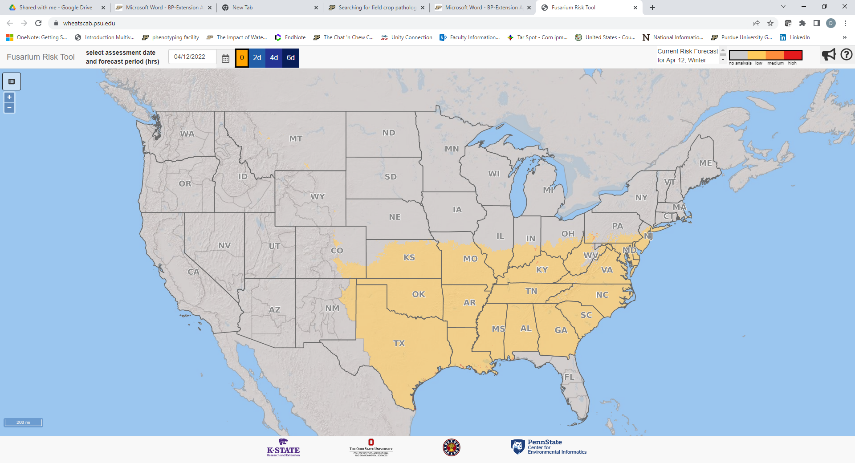
There are a few resources available for monitoring field crop diseases here in Indiana.


There are a few resources available for monitoring field crop diseases here in Indiana.
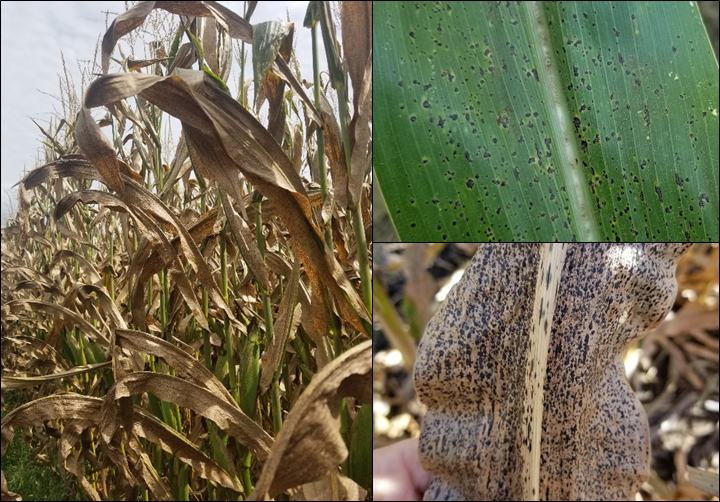
In Indiana, tar spot has been an annual concern since 2018 when growers experienced 20-60 bu/A loss. This past season favorable weather conditions led to another severe epidemic where there are reports of fields experiencing 50% reduction in yields across the Midwest.
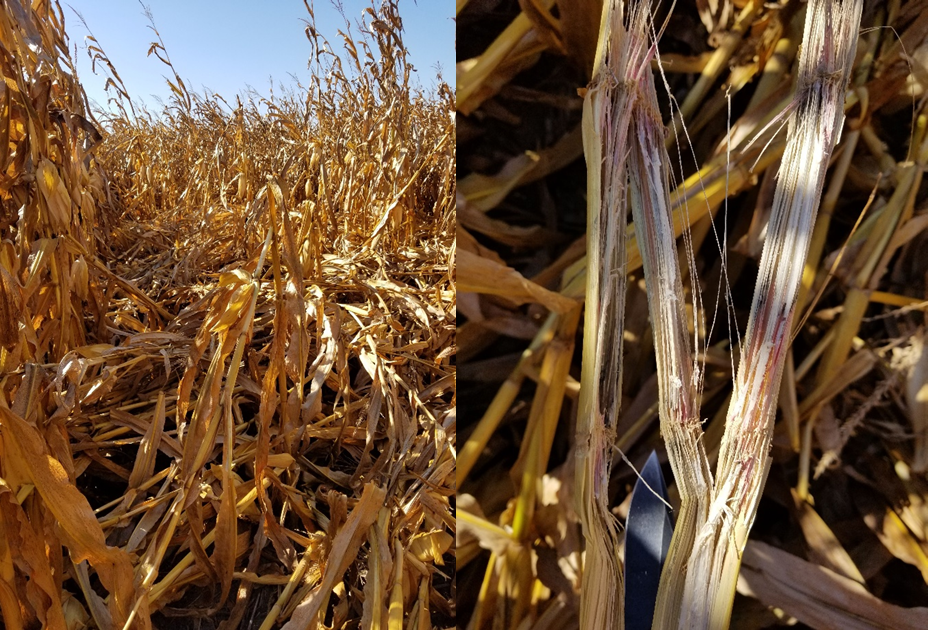
There are many factors that can contribute to stalk decline. There are both plant pathogenic causes and abiotic stresses factors that can play a role in reduced stalk integrity, such as drought and flooding. Either way, as stalk tissue becomes compromised below the main ear the stalk may become brittle or weak and be prone to lodging.
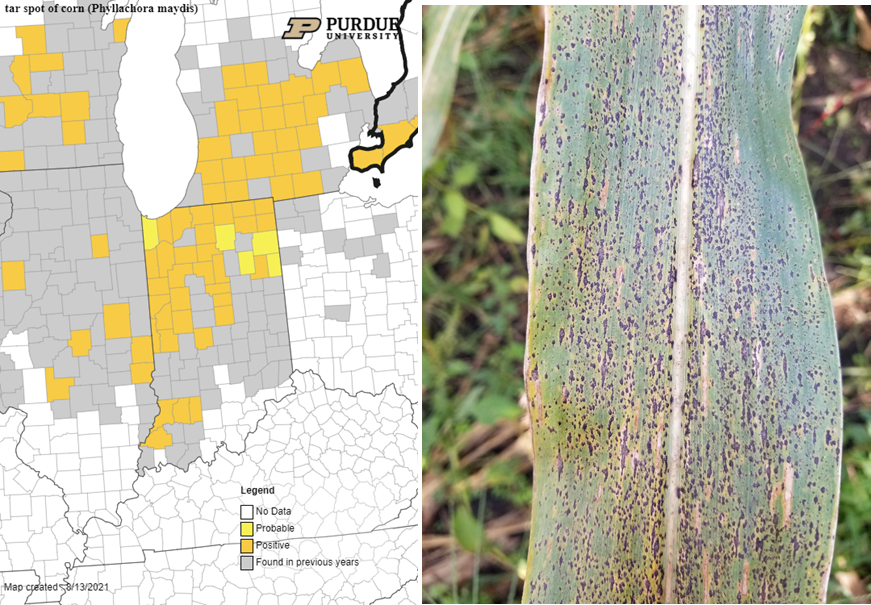
Both tar spot and southern corn rust continue to be documented across Indiana.
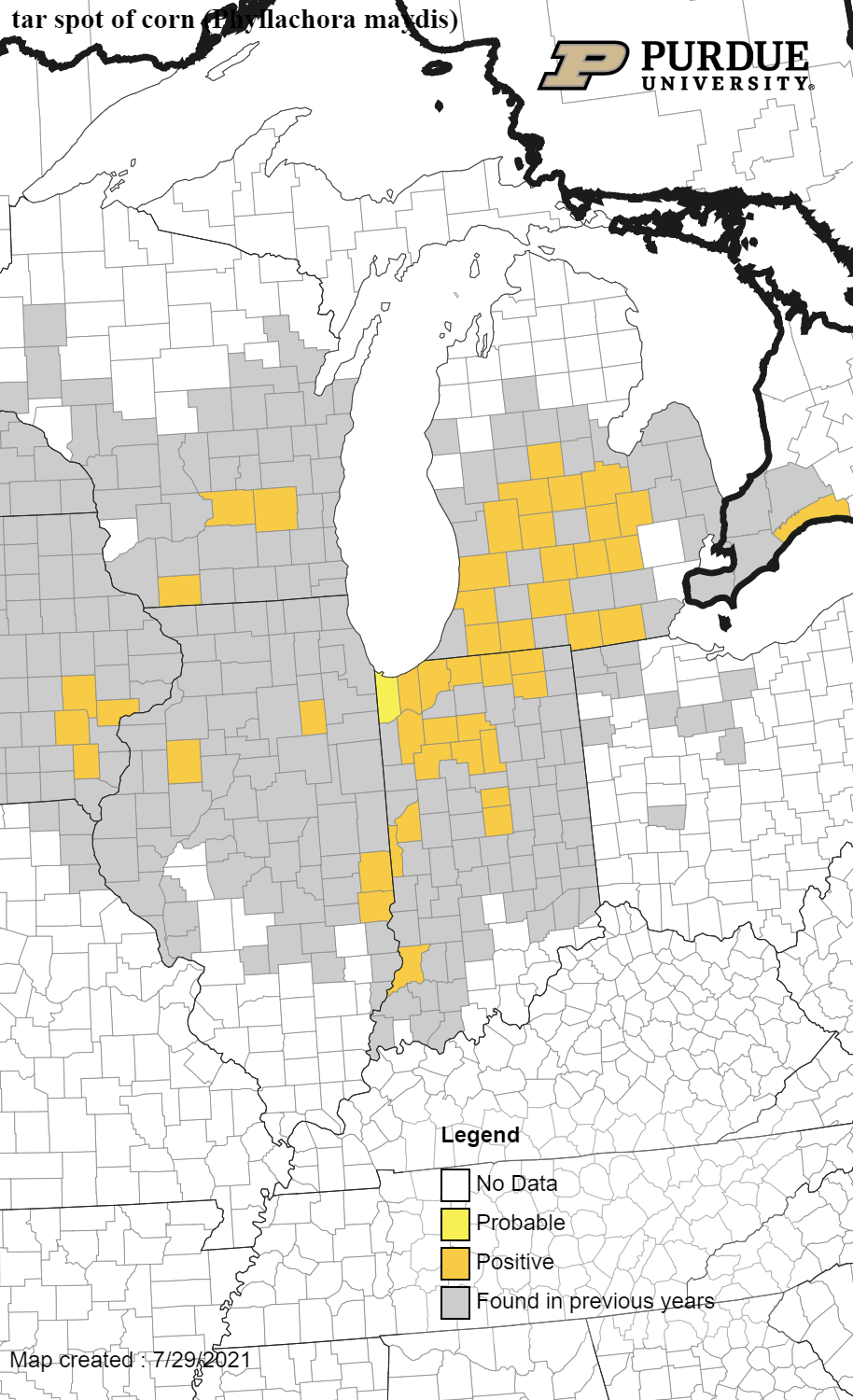
Tar Spot – We continue to confirm counties with active tar spot. Seventeen counties have been confirmed as of July 29, 2021.
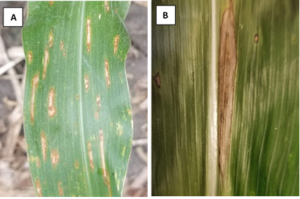
It is important to continue to scout for diseases in both corn and soybeans. Recent rains have created favorable environmental conditions for the development of foliar diseases in both crops. In our scouting rounds this week we continue to find gray leaf spot, northern corn leaf blight, and tar spot in corn (Figure 1 and 3), and frogeye leaf spot, downy mildew and Septoria brown spot in soybean (Figure 2). In addition, we continue to add counties with active tar spot and southern rust in Indiana. The most frequent question I have received is, “Should we make a fungicide application?” My response – What diseases are you finding in your field? What is your hybrid/variety susceptibility and field history? What growth stage? Are you irrigating? A fungicide application can be effective at reducing disease and protecting yield, but there are a number of factors that need to consider: the field[Read More…]
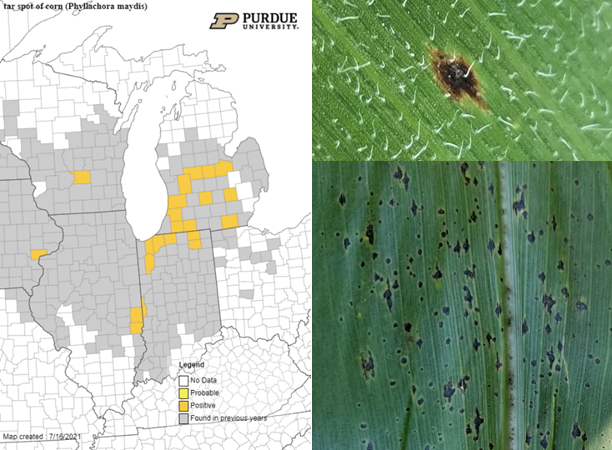
Recent rains and increased humidity across Indiana have increased the risk for foliar diseases to develop in both corn and soybean.
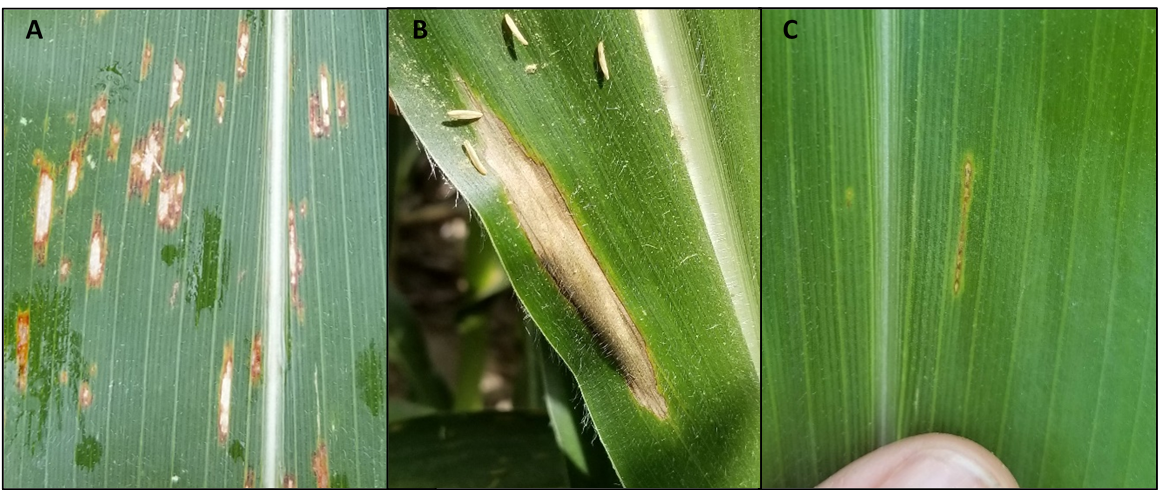
Early planted corn in Indiana is reaching mid- to late-vegetative stages and some tasseling in the south.
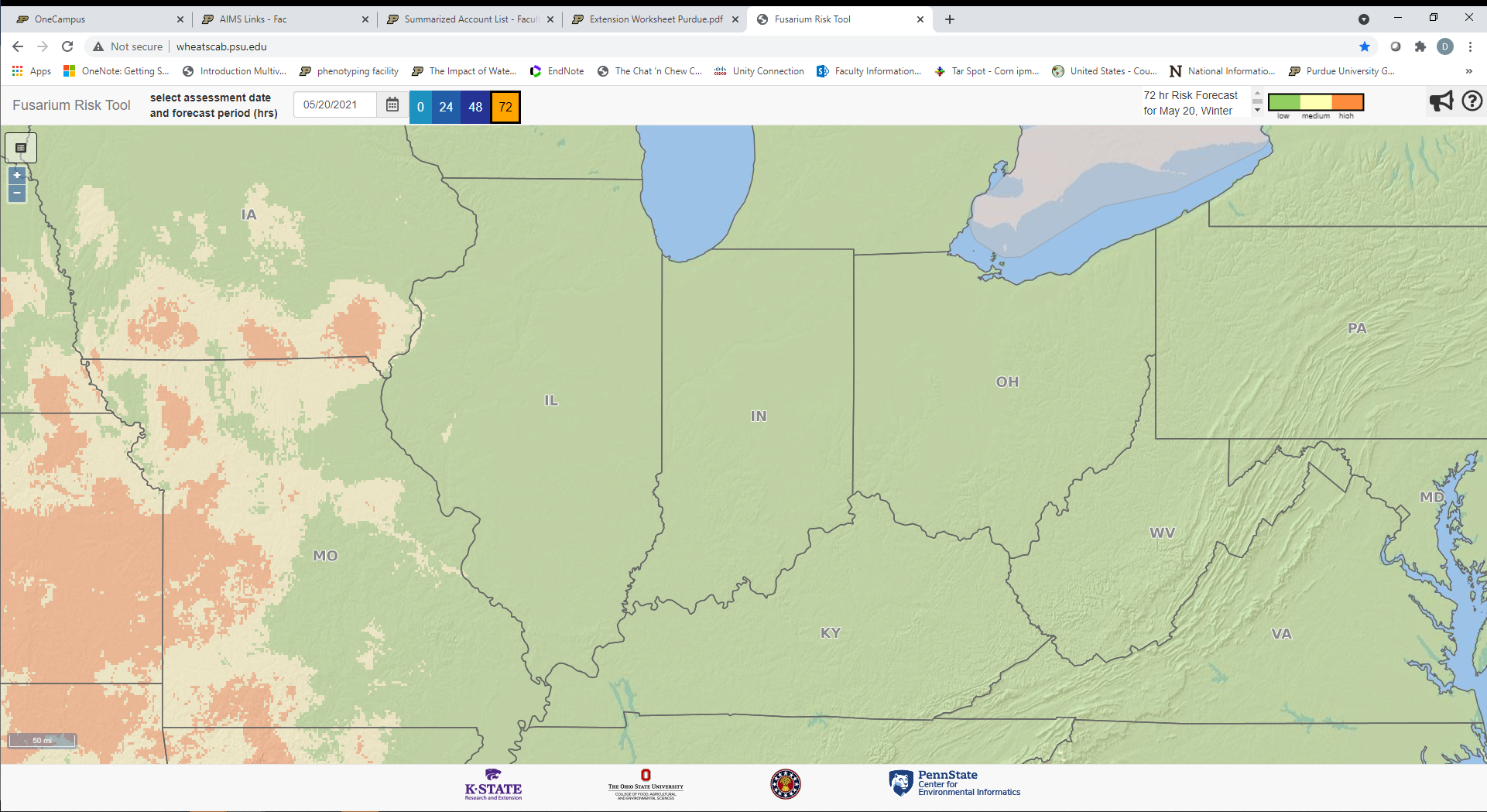
Wheat in Indiana is starting to head out in central Indiana and flowering will probably start this weekend.
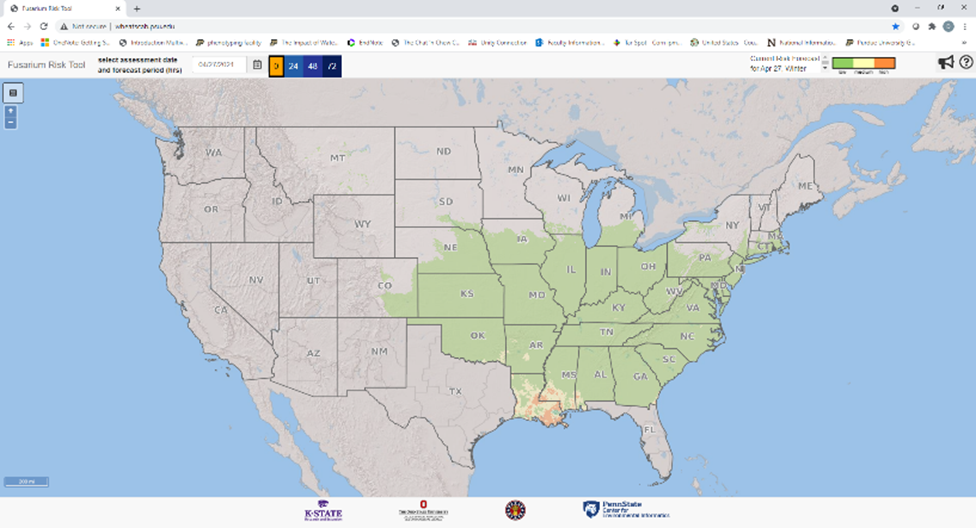
I want to remind you of a few resources for monitoring field crop diseases here in Indiana as planting has begun to ramp up here in Indiana.
© 2024 Purdue University | An equal access/equal opportunity university | Copyright Complaints | Maintained by Pest&Crop newsletter
If you have trouble accessing this page because of a disability, please contact Pest&Crop newsletter at luck@purdue.edu.